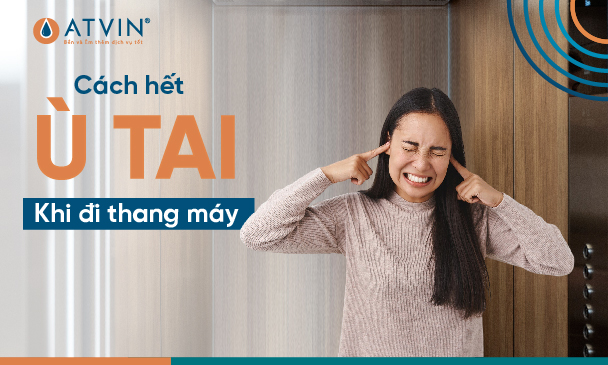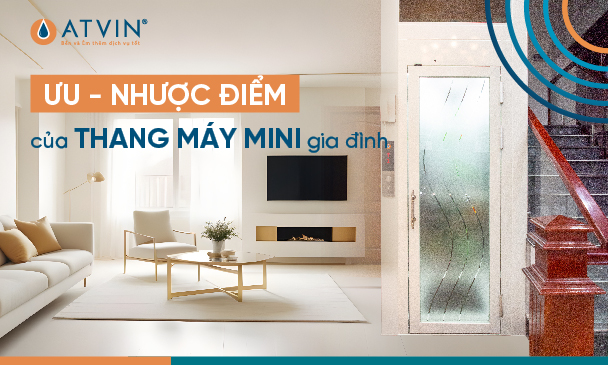Ear congestion when riding an elevator can occur in some people, especially when using high-speed elevators in tall buildings. Let’s explore the causes of ear congestion and how to alleviate it with Atvin.
1. What is ear congestion when riding an elevator?
Ear congestion is when you notice sounds like buzzing or ringing in one or both ears whenever the elevator moves up or down. Sometimes, you may not hear external sounds clearly.
2. Causes of ear congestion
-
Due to vestibular disorders
To explain the changes in air pressure causing ear congestion, let’s understand the role of the vestibular system inside the ear.
The vestibular system, part of the nervous system inside the cochlea, helps maintain posture, coordinate eye, head, and body movements. When you move or perform actions like somersaults, the vestibular system adjusts to maintain balance.
However, when using high-speed transport like planes, cars, or elevators, your body is stationary despite geographical changes. This difference isn’t processed correctly by the nervous system, causing ear congestion, dizziness, and nausea.
Due to changes in air pressure
Although elevators don’t move as fast as planes or cars, if the elevator cabin lacks ventilation, it can create air pressure issues. Moving upwards quickly changes air pressure, and your ears may not adjust in time. This pressure difference affects the eardrum, causing ear congestion and nausea, often referred to as “elevator sickness.”
3. How to relieve ear congestion when riding an elevator
If you experience ear congestion in an elevator, you can try the following methods:
- Using the Valsalva technique:
This involves pinching your nose, closing your mouth, and gently blowing to send air into the Eustachian tube, helping balance pressure. The Eustachian tube runs from the back of the upper throat to the middle ear, regulating pressure and draining fluids.
- Yawning, swallowing, or chewing gum: These actions help open the Eustachian tube to balance pressure.
- Listening to music: Using earphones or listening to music can soothe discomfort and reduce ear congestion.
4. Safety tips for riding an elevator
Tip 1: Do not play or run inside the elevator cabin.
Running can affect the suspension system of the cabin, causing noticeable shaking. This action is not recommended as it poses safety risks and affects others.
Tip 2: Avoid crowding the elevator door area.
Elevator doors are equipped with sensors to detect obstacles and prevent closing. However, accidents like door jamming or open doors without a cabin can occur due to quality issues. Regular maintenance is crucial to prevent these issues. It’s best to avoid crowding and stand orderly.
Tip 3: Do not use transparent materials to block the elevator door.
Sensors cannot detect transparent objects, so using glass to block the door will not prevent it from closing. Use the door open button inside the cabin or at the floor level.
Tip 4: Do not use elevators during a fire.
In case of a fire, elevator shafts are prone to smoke, with a high risk of suffocation and death. Elevators may also lose power, turning them into a dead end.
Elevator cabins always have an emergency bell and phone button to contact outside help. If there is no response, use the hotline number inside the cabin.
Atvin has outlined several methods to help passengers alleviate ear congestion when riding an elevator, along with essential safety tips. We hope you have a smooth and safe experience using elevators. Contact Atvin to own a durable, smooth, and safe elevator for your family.
Hotline: 0981159898



